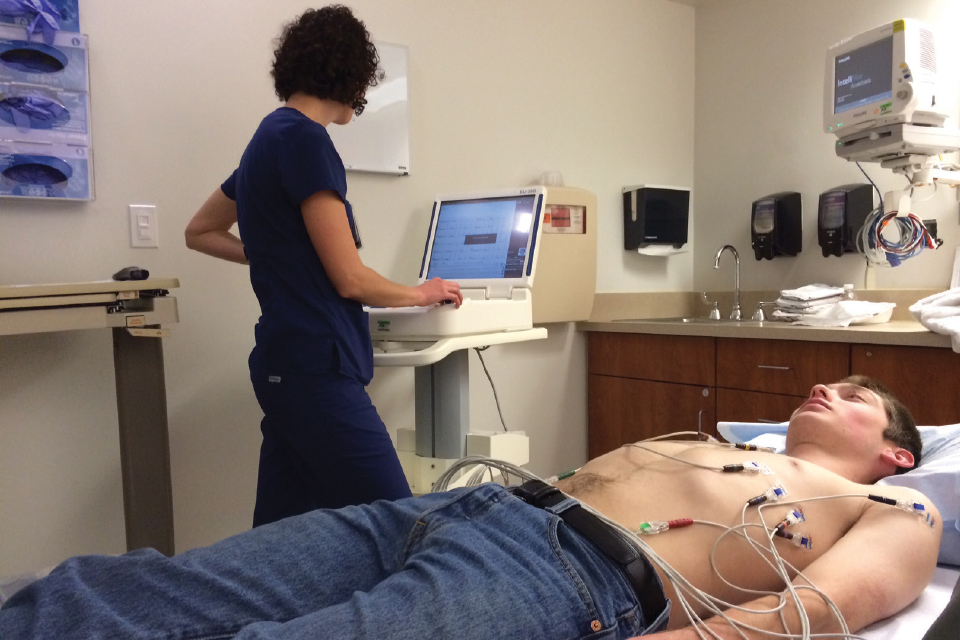Heart Screenings Help Prevent HCM in Student Athletes

It doesn’t happen often, but kids can suffer through some serious heart incidents. This March, a 15-year-old boy in Colorado nearly died after collapsing on the field in the middle of baseball practice due to cardiac arrest. In May, a 16-year-old basketball player in Chicago collapsed during a tournament, nearly losing his life. That same month, two other students died—an eighth-grader at a New Jersey school who was doing “routine activity” during gym class and a 15-year-old West Virginia student who had a heart attack on the field. A July 2014 study published by the Heart Rhythm Society found that “the incidence of [sudden cardiac arrest] in high school student-athletes is higher than previous estimates and may justify more advanced cardiac screening and improved emergency planning in schools.”
The leading cause of sudden cardiac deaths in young athletes is a condition called hypertrophic cardiomyopathy (HCM). HCM is a genetic condition that causes the heart muscle to thicken, making it harder for the organ to pump blood. According to the Mayo Clinic, most people who have HCM lead ordinary lives and don’t realize they have a heart condition. There are few symptoms—shortness of breath, fatigue, chest pain during exercise, and abnormal heart rhythms. The difficulty lies in identifying HCM, as all these symptoms may seem normal to a young, athletic person who is strenuously working out.
HCM, though rare, is relatively easy to detect. Managing the condition involves getting advice from a doctor on participating in sports, making lifestyle changes (adopting a healthy diet, watching one’s weight, and curtailing alcohol consumption), taking proper medication, and undergoing corrective surgery in some cases.
Left undiagnosed, HCM can be life-threatening. It affects one in 500 student-athletes every year and is the leading cause of sudden death from heart-related problems in people under the age of 30.
This month, high school football players start practices on the first day of school, with games beginning shortly thereafter. Dr. Paul Pagley, a clinical cardiologist with Austin Heart who has medical staff privileges at Heart Hospital of Austin, offered this advice to parents: “As you secure your son or daughter’s safety gear for their sport of choice, I urge you to protect them in a way sports gear cannot—have them screened for HCM. Deaths due to heart disorders are largely preventable if they’re identified early.”
Austin and Round Rock Independent School Districts require students to have yearly physicals in order to participate in athletic programs; these exams, however, do not routinely include HCM screenings. Both AISD and RRISD often offer the option of free heart screening for students, but these are held in May at the end of the school year. RRISD’s 2014 screening was done through Championship Hearts Foundation, a nonprofit organization that provides heart screening for athletes, cheerleaders, drill and dance team, marching band members, and any Texas student between the ages of 14 and 18 who wants one. The group typically requests a donation and students must register for a screening online at champhearts.org. Upcoming screenings are available.
This month, the Heart Hospital of Austin is offering free heart screenings for students (ages 14 to 18) from 8 a.m. to noon on Saturday, Aug. 23. The Heart Hospital of Austin, part of St. David’s Medical Center, has been providing free heart screenings for young athletes for several years now and has evaluated some 6,000 teens.
The screening includes a 12-lead electrocardiogram (EKG) and a limited two-dimensional echocardiogram (an ultrasound of the heart) to detect HCM. Each of the tests takes only five minutes to perform and is non-invasive and painless. Results of the screening are reviewed by a cardiologist and are available immediately.






